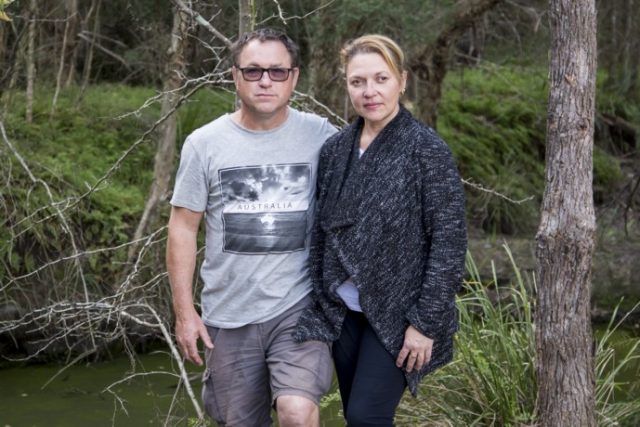Londonderry residents say they are fearful of what they aren’t being told, as the NSW Environment Protection Authority (EPA) investigates local PFAS contamination.
The investigation, which was launched back in 2016, is looking into the historic use of fire-fighting foams at the Londonderry TestSafe Australia site.
Over the past few months some residents have received letters, notifying them of the contamination of Rickabys Creek, which runs through several Londonderry properties.
Poly-fluoroalkyl substances or PFAS is mainly used to extinguish fires but, if consumed, can potentially cause serious toxic effects.
International health experts have flagged concerns over infant birth defects and cancer.
However, The Department of Health says there is “no conclusive evidence” that exposure to PFAS causes cancer or birth defects.
PFAS is present in a number of everyday items, so people are expected to have some form present in their blood, but it can be very serious for those who have ingested it or have ongoing exposure.
The EPA has warned residents to not drink, consume, wash or garden with the creek water, but Robert Craig is worried it’s too little too late for his family, who have been consuming from fruit trees watered by the creek water for years.
“We’re very worried,” Mr Craig said.
“The test is over $600 per person to get checked for PFAS, we’re a family of six so $3500 is a lot of money when you start looking at it that way.”
Rickabys Creek also received PFAS contamination from the Richmond RAAF base back in 2016, with locals returning positive tests for high contamination in their blood.
Londonderry residents like Mr Craig were considered safe from the RAAF contamination due to being so far downstream, but now with the TestSafe site contamination, they are worried they could be at risk.
“They just said stop using it but we don’t really know much more,” Mr Craig said.
A spokesperson from the EPA said they had been communicating with some residents since 2016 but the recent letter drop was for additional residents that were only recently identified as being affected.
“Water samples obtained further downstream, found PFAS at concentrations marginally above the national drinking water guidelines,” the spokesperson said.
“The presence of PFAS in the environment does not necessarily mean there is a human health risk.
“It is important to assess if there are any exposure pathways, through which people might come into contact with PFAS.”
TestSafe is now constructing a new retention dam to capture any surface water from the PFAS-impacted fire-fighting training ground to minimise the run-off. Ongoing surface and groundwater monitoring, both on and off site, will help determine if this is effective in protecting the community from contamination in the future.
Contact the EPA’s Environment Line on 131 555 if you think you might be affected.
Nicola Barton
A graduate of Western Sydney University, Nicola Barton is a news journalist with the Western Weekender, primarily covering crime and politics.

